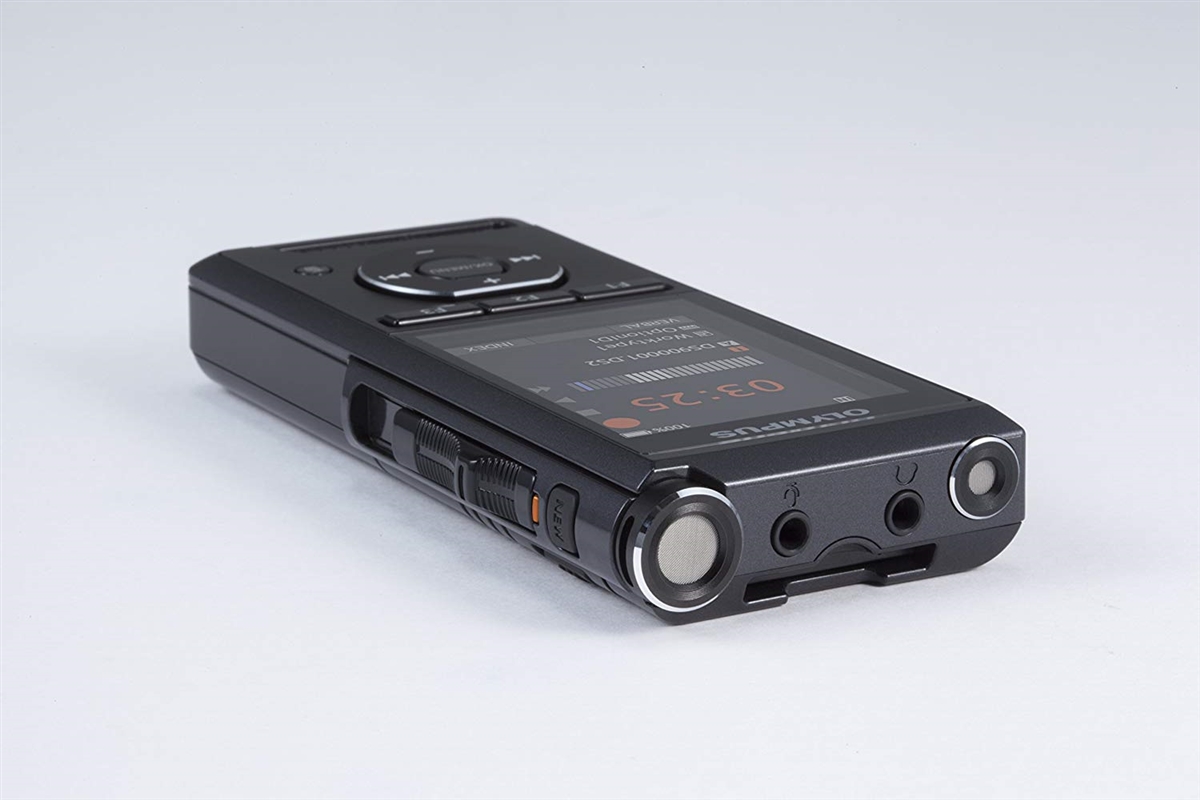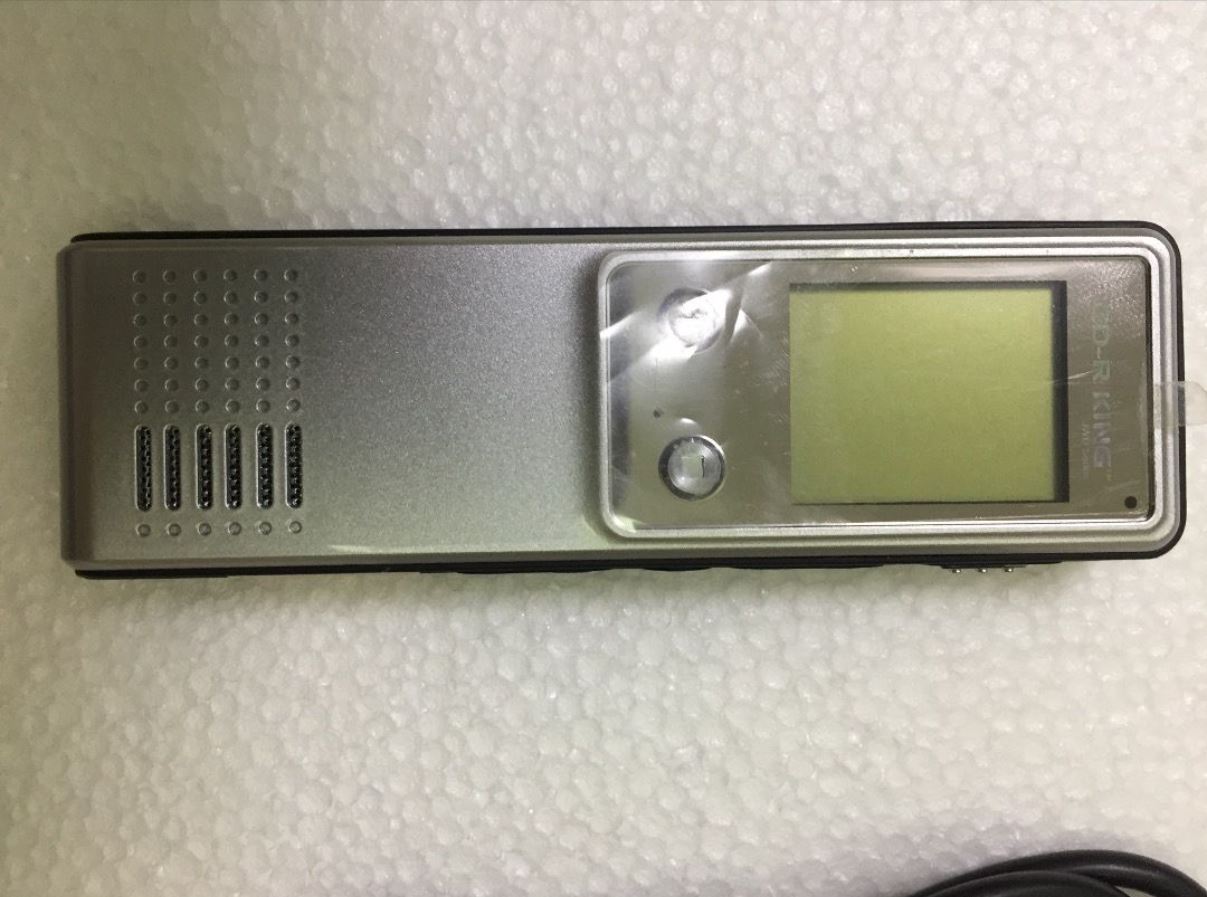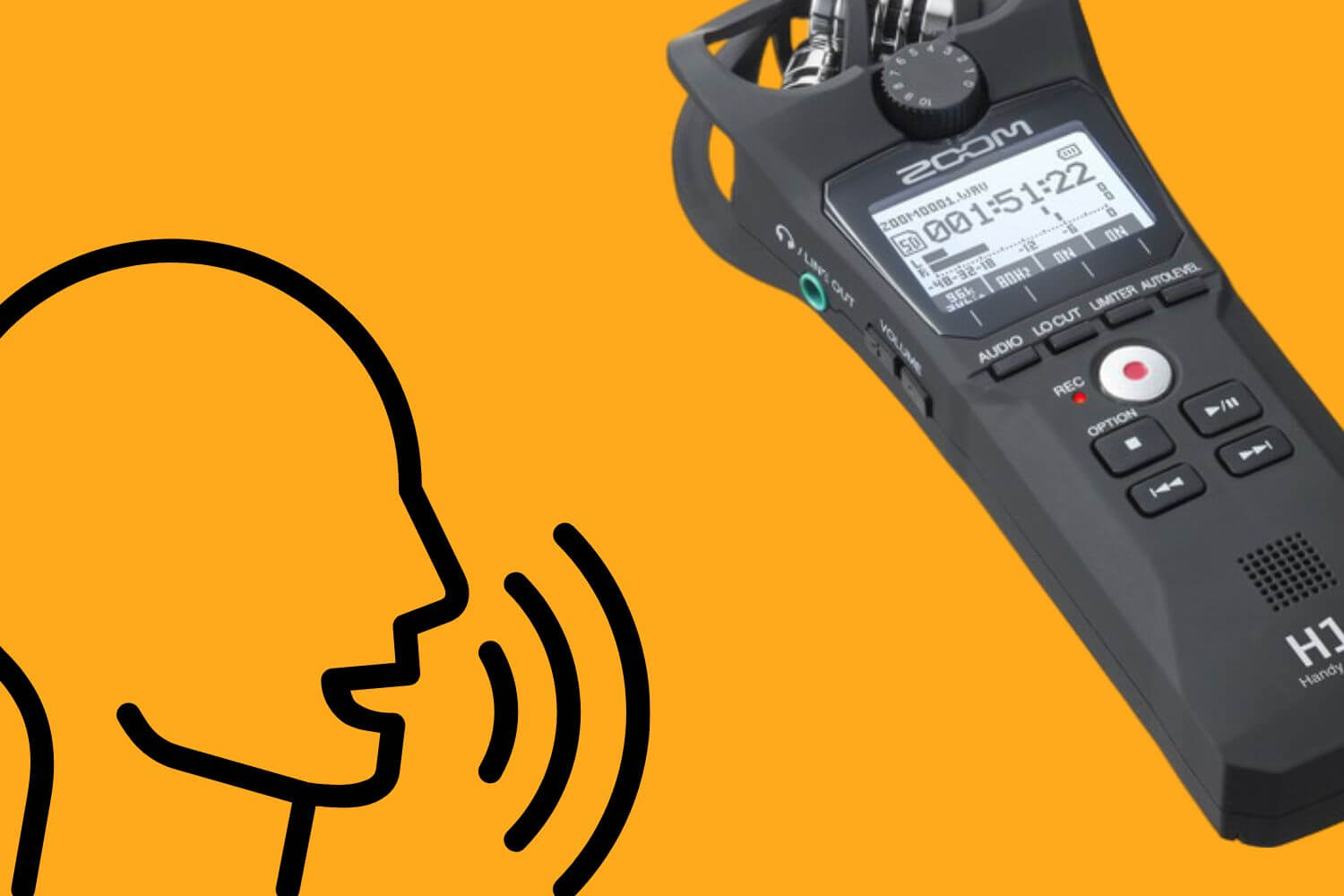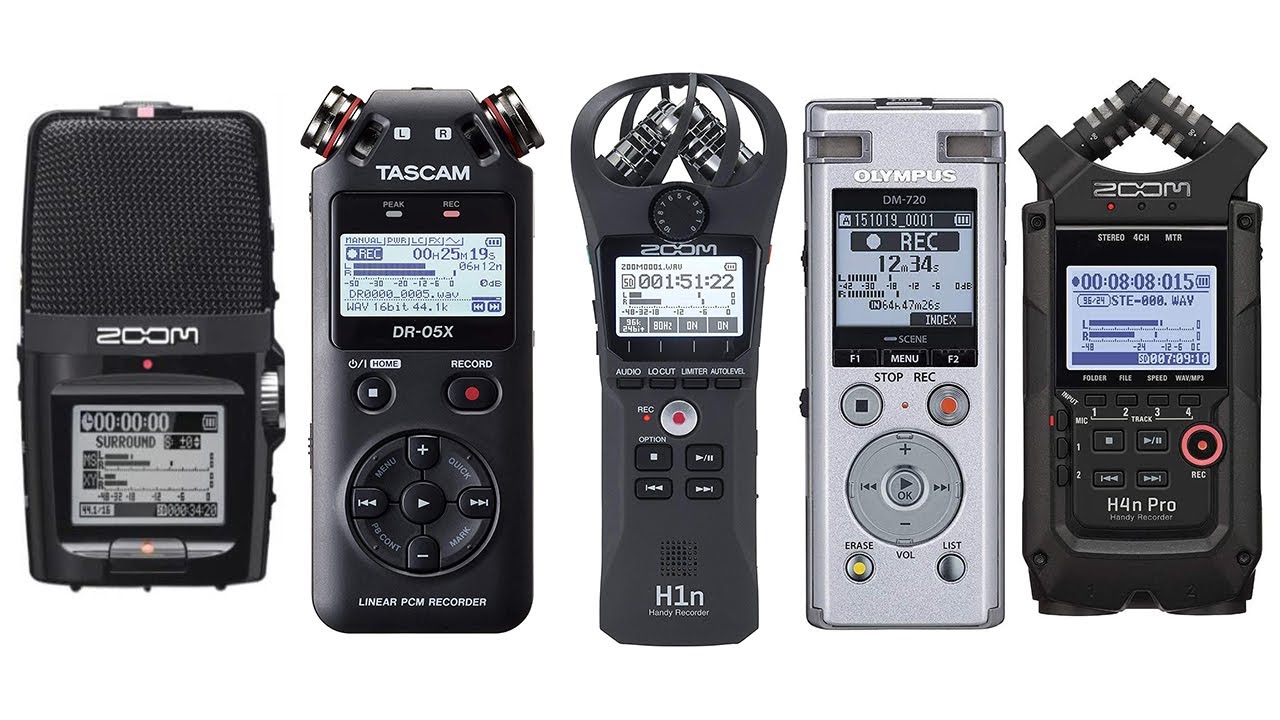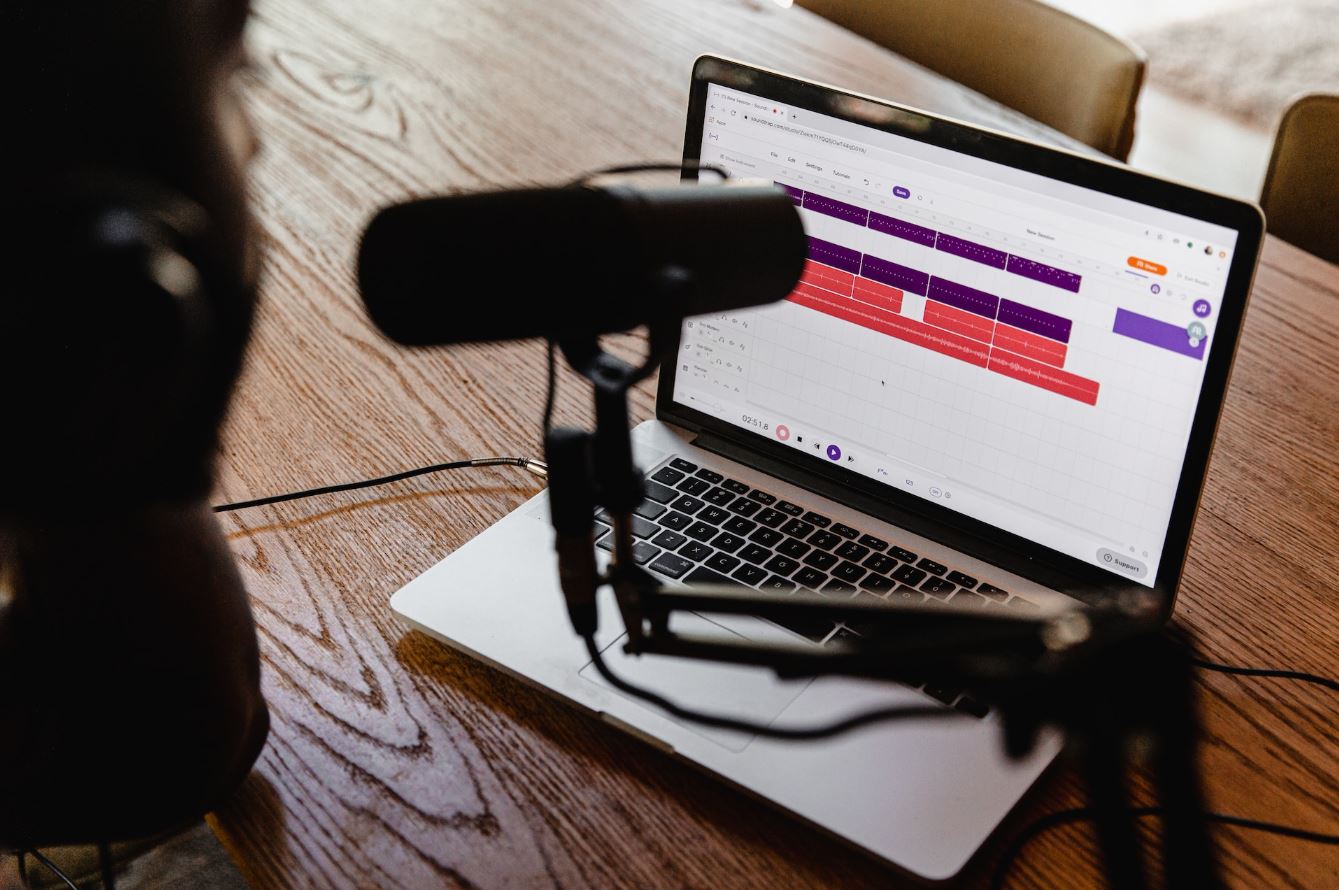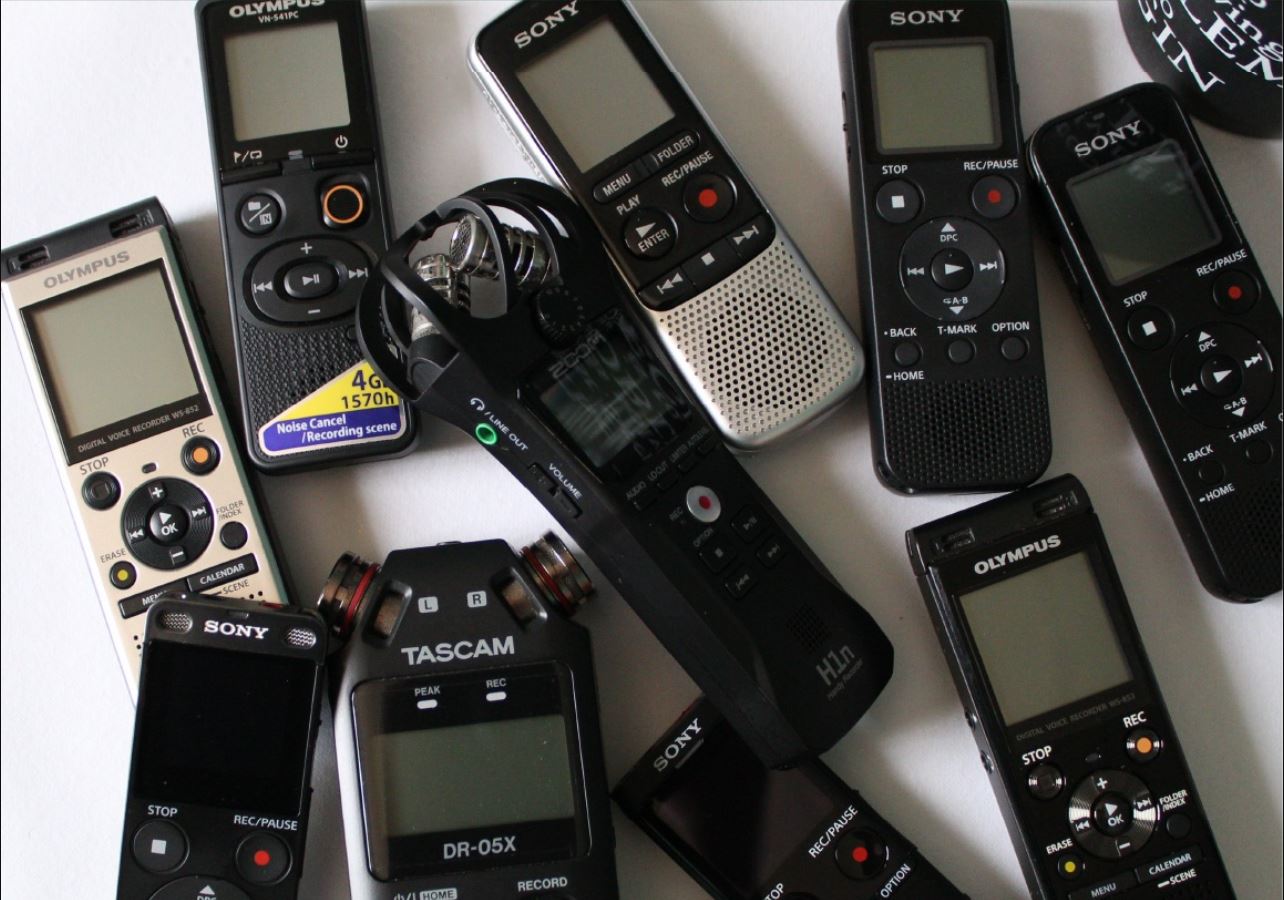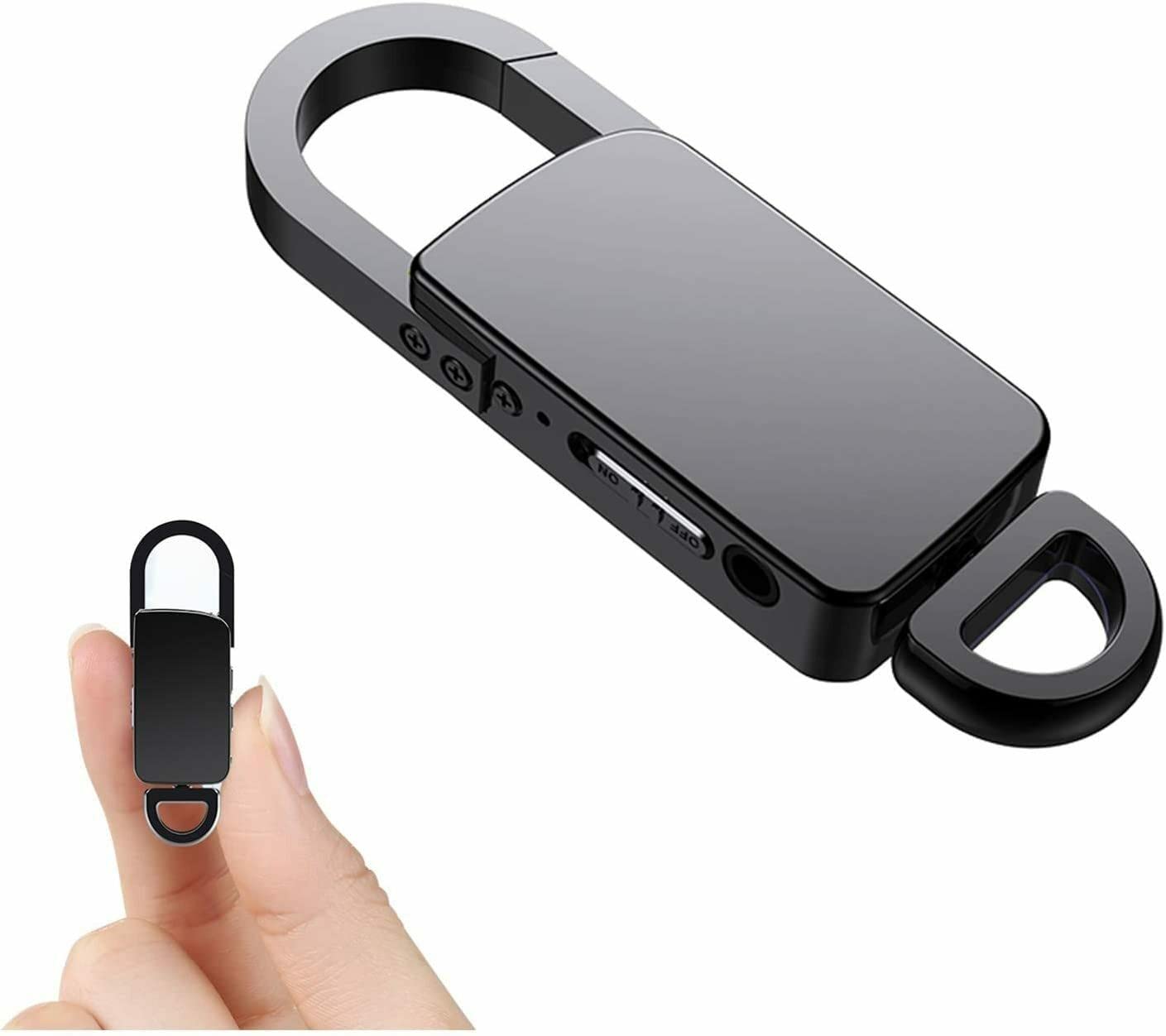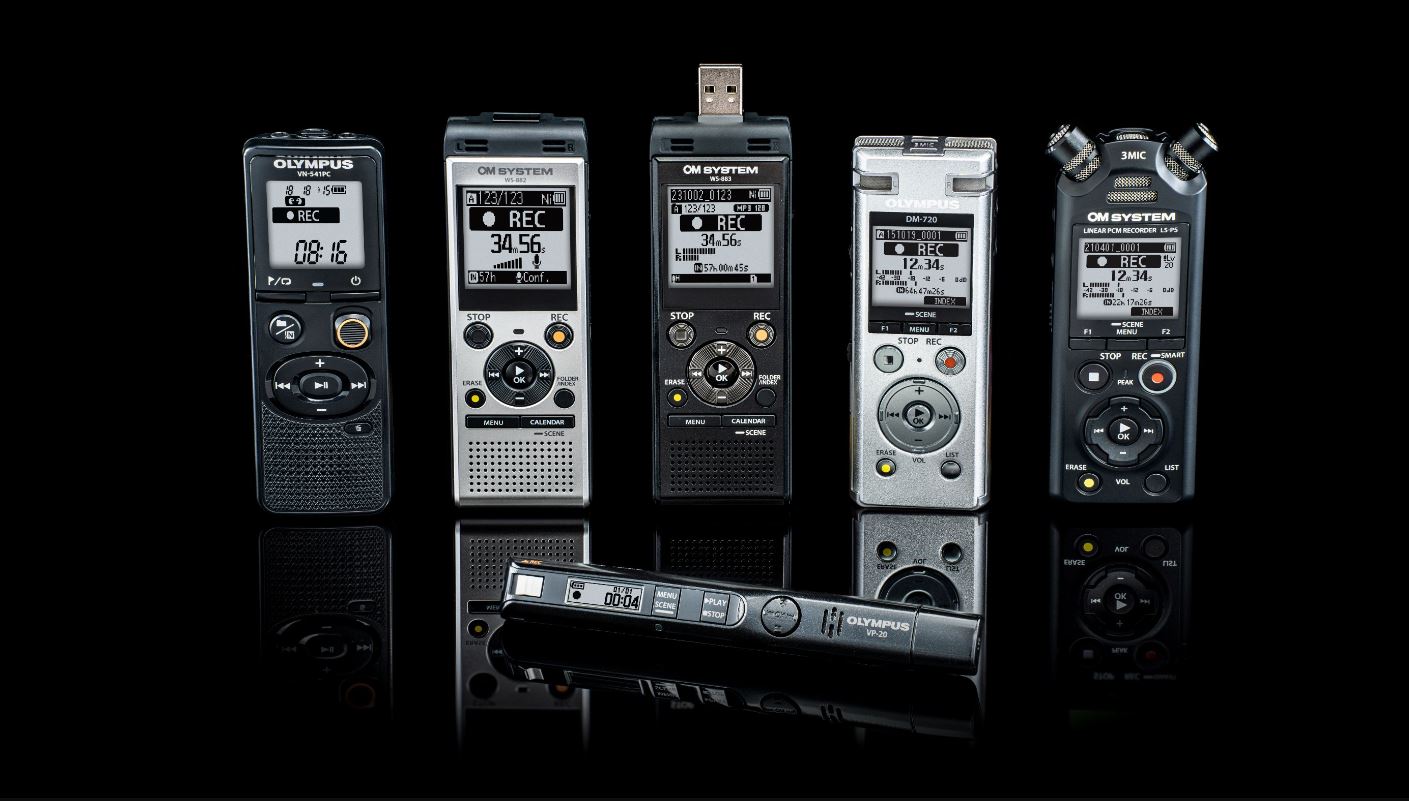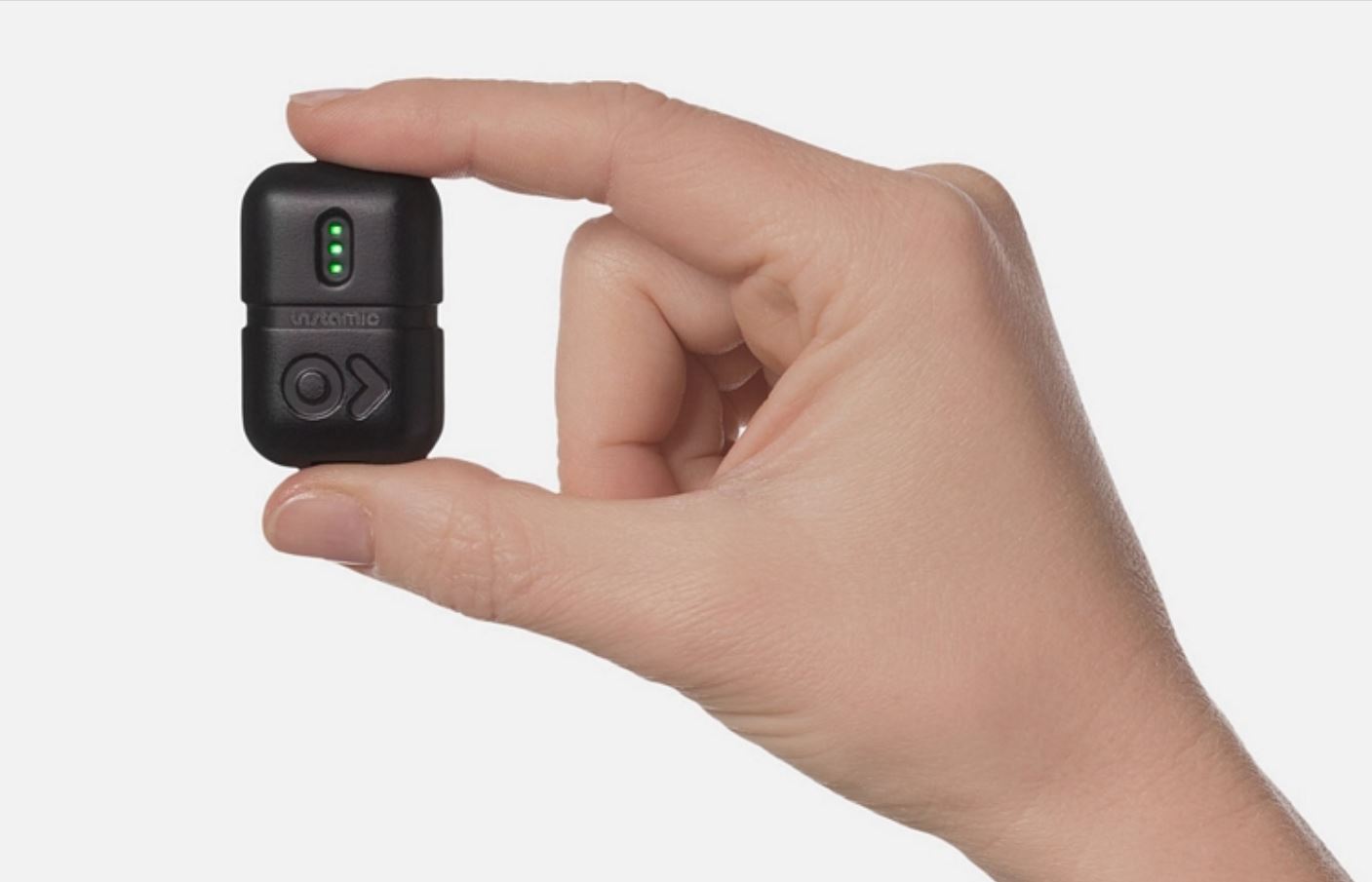Understanding the Basics of a Digital Voice Recorder
A digital voice recorder is a portable electronic device that allows you to capture and store audio recordings. It offers a convenient way to record lectures, interviews, meetings, and other voice-based content. Unlike traditional analog tape recorders, digital voice recorders use modern technology to convert and save audio in a digital format.
One of the key advantages of digital voice recorders is their ability to provide high-quality recordings. They utilize advanced microphones and processors that capture clear and crisp sound, making it easier to understand the recorded content. Additionally, digital voice recorders offer various storage options, allowing you to save a large number of recordings without the need for bulky physical media.
Another significant feature of digital voice recorders is their portability. They are compact and lightweight, making them easy to carry in your pocket or bag. This allows you to take your recorder wherever you go, ensuring that you never miss an important conversation or information. Plus, most digital voice recorders have a long battery life, ensuring that you can record for extended periods without worrying about running out of power.
Using a digital voice recorder is generally simple and straightforward. Most devices feature intuitive user interfaces and controls, making it easy to start, pause, stop, and review recordings. Some recorders even offer additional features such as voice activation, which detects sound and automatically starts recording, and noise reduction, which helps eliminate background noise to enhance the clarity of the recordings.
Additionally, many digital voice recorders come equipped with USB ports or wireless connectivity options, allowing for easy transfer of recorded files to a computer or other devices. This makes it convenient to store, organize, and share your recordings in various formats. Moreover, some recorders offer built-in editing features, enabling you to trim, split, or enhance recordings directly on the device.
Overall, understanding the basics of a digital voice recorder is essential if you want to make the most of this versatile device. Whether you need it for educational, professional, or personal purposes, digital voice recorders offer a convenient and efficient solution for capturing and preserving audio content. So, whether you are a student, journalist, researcher, or simply someone who wants to keep track of important conversations, investing in a digital voice recorder can greatly enhance your productivity and ensure that you never miss a detail.
Advantages of Digital Voice Recorders
Digital voice recorders have revolutionized the way we capture and store audio recordings. They offer a multitude of advantages compared to traditional analog tape recorders. Here are some of the key advantages of using a digital voice recorder:
- Superior Sound Quality: Digital voice recorders employ advanced technology that ensures high-quality recordings. They capture clear and accurate sound, allowing you to understand the recorded content clearly and without any distortion.
- Extended Recording Time: Unlike analog tape recorders that were limited by the physical length of the tape, digital voice recorders offer a significantly longer recording time. With large storage capacities, you can record hours of audio content without worrying about running out of space.
- Convenience and Portability: Digital voice recorders are compact and lightweight, making them extremely portable. You can easily carry them in your pocket or bag, enabling you to capture important voice recordings on-the-go.
- Easy Data Storage and Transfer: Thanks to their digital nature, voice recordings on digital voice recorders can be easily stored and transferred. You can save your recordings directly onto the device’s memory or external storage media, and even transfer them to your computer or other devices via USB or wireless connectivity.
- Editing and Organization Features: Many digital voice recorders come with built-in editing features that allow you to trim, split, and enhance your recordings. They also offer organizational features such as file naming, categorization, and tagging, making it easier to manage and locate specific recordings.
- Versatility: Digital voice recorders offer versatility in terms of usage. They can be used in various situations, including lectures, interviews, meetings, dictations, and even for recording personal memos or musical ideas.
- Improved Battery Life: Digital voice recorders generally have longer battery life compared to their analog counterparts. This ensures that you can record for extended periods without worrying about the device running out of power.
These advantages make digital voice recorders a valuable tool for students, professionals, journalists, researchers, and anyone who needs to capture and store audio content. With their advanced features and convenience, digital voice recorders have become an indispensable device in many fields. So, whether you need it for note-taking, documentation, or simply preserving memories, investing in a digital voice recorder can greatly enhance your productivity and ensure that you never miss important information.
Different Types of Digital Voice Recorders
When it comes to digital voice recorders, there are various types available on the market, each designed to cater to different needs and preferences. Understanding the different types can help you make an informed decision on which one is best suited for your requirements. Here are some of the most common types of digital voice recorders:
- Handheld Digital Voice Recorders: These are the most popular and widely used digital voice recorders. They are compact and portable, making them suitable for on-the-go recording. Handheld recorders usually have built-in microphones and offer a range of features such as adjustable recording quality settings, internal memory, and USB connectivity.
- Pen-Style Digital Voice Recorders: As the name suggests, these recorders resemble a regular pen in appearance. They are lightweight and discreet, making them ideal for covert recordings or situations where you prefer a more inconspicuous device. Pen-style recorders typically have a built-in microphone, internal memory, and a USB connector for easy data transfer.
- Smartphone Voice Recording Apps: With the advancement of smartphone technology, many modern smartphones offer voice recording apps as a standard feature. These apps utilize the built-in microphone of the smartphone to capture audio. While not specifically designed as dedicated voice recorders, they are convenient for users who prefer to have all-in-one functionality in their smartphones.
- Professional Digital Voice Recorders: These recorders are designed for professional use, such as in journalism, broadcasting, or professional interviews. They offer superior sound quality, advanced features, and professional-grade microphones for capturing clear and high-fidelity recordings. Professional recorders often have larger storage capacities and additional connectivity options.
- USB Flash Drive Voice Recorders: These recorders double as USB flash drives, allowing you to store and transfer digital files in addition to recording voice. They are compact and easy to use, typically featuring a built-in USB connector for direct plug-and-play into a computer or other devices.
- Wireless Digital Voice Recorders: These recorders offer the convenience of wireless connectivity. They can be connected to smartphones or computers via Bluetooth or Wi-Fi, allowing for seamless transfer of recordings without the need for cables. Wireless voice recorders are often used for remote interviews or situations where mobility is essential.
Each type of digital voice recorder has its own advantages and features, so it’s important to consider your specific recording needs and preferences when choosing the right one for you. Whether you need a compact recorder for casual use or a professional-grade device for professional applications, there is a digital voice recorder available to suit your requirements.
Key Features to Consider When Choosing a Digital Voice Recorder
With a wide range of options available, choosing the right digital voice recorder can be overwhelming. To help you make an informed decision, it’s essential to consider the key features and functionalities of the device. Here are some important factors to consider when choosing a digital voice recorder:
- Recording Quality: Look for a recorder that offers adjustable recording quality settings. This allows you to choose the appropriate recording mode based on your specific needs, whether it’s capturing meetings, interviews, or lectures. Higher recording quality settings ensure clearer and more detailed audio.
- Storage Capacity: Consider the internal memory or storage capacity of the recorder. Determine how much recording time you will need and choose a device with sufficient storage. Some recorders also allow for expandable storage through memory cards.
- Battery Life: Check the battery life of the recorder. Longer battery life is essential if you plan to record for extended periods without access to power. Look for devices with rechargeable batteries or the option to use replaceable batteries.
- Microphone Quality: Pay attention to the microphone quality, as it directly affects the clarity of your recordings. Look for recorders with high-quality built-in microphones or the option to connect external microphones for better sound capture.
- Usability and Interface: Consider the user interface and ease of use. Look for recorders with intuitive controls and menus that are easy to navigate. A clear and legible display is also important for reviewing and managing your recordings.
- Connectivity Options: Determine if the recorder offers the necessary connectivity options for transferring your recordings. USB connectivity is common, allowing for easy file transfer to computers or other devices. Some recorders also offer wireless connectivity via Bluetooth or Wi-Fi.
- Additional Features: Consider any additional features that may be important to you. This could include features such as voice activation, noise cancellation, file editing capabilities, or the ability to add timestamps to your recordings for better organization.
- Brand and Reviews: Research and consider reputable brands known for producing reliable and high-quality digital voice recorders. Read reviews and feedback from other users to get insights into the performance and durability of the device.
By considering these key features, you can narrow down your options and find the digital voice recorder that best meets your recording needs. Remember to prioritize the features that are most important to you, keeping in mind factors such as sound quality, storage capacity, usability, and connectivity options. With the right digital voice recorder in hand, you’ll be well-equipped to capture and save important audio content with ease.
How to Use a Digital Voice Recorder
Using a digital voice recorder is relatively straightforward, but it’s important to familiarize yourself with its features and functions to make the most of the device. Here are some general steps to help you get started:
- Read the Manual: Start by reading the instruction manual provided with your digital voice recorder. This will give you a better understanding of its specific features and how to navigate through its settings.
- Charge or Insert Batteries: If your digital voice recorder has a rechargeable battery, ensure it is fully charged before use. For devices with replaceable batteries, insert fresh batteries according to the instructions.
- Adjust Settings: Set the recording quality, microphone sensitivity, and other relevant settings based on your preferences and recording environment. Higher recording quality settings may result in larger file sizes.
- Position the Microphone: To capture clear audio, position the built-in or external microphone of the recorder towards the sound source. Avoid covering or obstructing the microphone for optimal sound quality.
- Start Recording: Press the designated button to start recording. Some recorders may have a dedicated record button, while others may require you to access the recording function through the menu or touchscreen.
- Review and Manage Recordings: Use the device’s interface to review and manage your recordings. You can typically navigate through the recorded files using buttons or a touchscreen. Some recorders allow you to add labels or timestamps for easier organization.
- Transfer and Backup Recordings: Connect your digital voice recorder to a computer via USB or wireless connectivity to transfer your recordings. Save them on your computer or an external storage device for backup and easy access.
- Edit and Enhance Recordings: If your recorder has editing features, you can trim, split, or enhance your recordings directly on the device. This allows you to remove unwanted parts, adjust volume levels, or apply noise reduction techniques.
- Keep the Recorder Updated: Check for firmware updates for your digital voice recorder from the manufacturer’s website. Updating the firmware can improve performance, stability, and add new features to your device.
- Practice and Experiment: Take some time to practice using your digital voice recorder and experiment with its settings and features. This will help you become comfortable with its functionality and optimize its use for different recording scenarios.
Remember to always be mindful of legal and ethical considerations when using a digital voice recorder. Respect the privacy and consent of others when recording conversations or interviews. In some situations, you may need to seek permission or inform others that they are being recorded.
By following these steps and becoming familiar with your digital voice recorder, you’ll be able to confidently and effectively capture your important audio recordings with ease and convenience.
Popular Brands and Models of Digital Voice Recorders
When it comes to digital voice recorders, there are several trusted brands that offer a wide range of models to suit different needs and budgets. Here are some popular brands and their notable models:
- Sony: Sony is a well-known brand in the audio industry, and they offer a variety of digital voice recorders. The Sony ICD-UX570 and Sony ICD-PX370 are popular models known for their excellent sound quality, user-friendly interfaces, and long battery life.
- Olympus: Olympus is renowned for producing high-quality audio recording devices. Their Olympus WS-853 and Olympus VN-541PC models are favored for their exceptional microphone sensitivity, noise cancellation features, and durability.
- Zoom: Zoom specializes in professional audio products and offers digital voice recorders suitable for both amateurs and professionals. The Zoom H5 Handy Recorder and Zoom H1n Handy Recorder are popular choices known for their versatility, sound quality, and advanced features.
- Philips: Philips manufactures a range of reliable and user-friendly digital voice recorders. The Philips DVT2710 and Philips DPM6000 are popular models known for their clear sound reproduction, ergonomic designs, and convenient features like voice activation and file encryption.
- Tascam: Tascam is a reputable brand that produces a wide array of digital audio recording equipment. The Tascam DR-40X and Tascam DR-05X are popular choices among musicians, journalists, and podcasters due to their high-quality recording capabilities, portability, and professional-grade features.
- Dictaphone: Dictaphone offers digital voice recorders specifically designed for professional dictation purposes. The Dictaphone PowerMic III and Dictaphone Professional Pocket Memo are widely used by medical professionals and legal practitioners due to their efficient and accurate speech-to-text features.
These are just a few examples of popular brands and models available in the market. When choosing a digital voice recorder, consider factors such as sound quality, storage capacity, battery life, user interface, and additional features that suit your specific requirements.
It’s also important to read reviews and compare prices to ensure that you are getting a recorder that meets your needs within your budget. With the right brand and model, you can enjoy reliable and high-quality audio recording for various purposes, whether it’s for educational, professional, or personal use.
Tips for Maximizing the Use of a Digital Voice Recorder
A digital voice recorder is a versatile tool that can greatly enhance your ability to capture and store audio recordings. To make the most of your device and ensure optimal performance, consider the following tips:
- Choose the Right Recording Mode: Adjust the recording quality and mode based on the specific situation. For lectures or meetings, use a higher quality setting to capture clear and detailed audio. For voice memos or casual recordings, a lower quality setting can help conserve storage space.
- Position the Recorder Appropriately: Place the digital voice recorder close to the sound source to ensure maximum sound clarity. Position it in such a way that the microphone is facing the direction of the audio you want to capture.
- Test and Adjust Microphone Sensitivity: Experiment with the microphone sensitivity settings on your recorder to find the optimal setting for different recording environments. Higher sensitivity may be useful in noisy environments, while lower sensitivity can help reduce background noise in quieter settings.
- Use Headphones for Playback: When reviewing your recordings, use headphones instead of relying solely on the device’s built-in speaker. Headphones provide greater audio clarity, allowing you to catch any important details that may have been missed during the initial recording.
- Label and Organize Recordings: Take advantage of the labeling and organizational features of your digital voice recorder. Assign meaningful names or tags to your recordings to easily locate specific files later. Categorize or sort recordings based on topics or dates to maintain an organized archive.
- Consider the Recording Environment: Be mindful of the recording environment and make any necessary adjustments. Minimize background noise as much as possible by choosing a quiet location or using features like noise reduction if available on your device.
- Regularly Backup Recordings: Create backups of your important recordings to prevent loss or accidental deletion. Transfer the files to your computer, external hard drive, or cloud storage. This ensures that your recordings are safe in case the digital recorder gets lost, damaged, or malfunctions.
- Keep the Firmware Updated: Check for firmware updates from the manufacturer’s website and install them as necessary. Firmware updates often include bug fixes, performance improvements, and new features that can enhance the functionality and stability of your digital voice recorder.
- Practice Active Listening: During recordings, focus on actively listening to the conversation or presentation. Take note of important points or highlights to help you navigate through the recording during playback. This can aid in the accurate representation and understanding of the recorded content.
- Utilize the Device’s Additional Features: Explore the additional features provided by your digital voice recorder. These may include features such as voice activation, file editing, and the ability to add timestamps. Familiarize yourself with these functions to optimize your recording experience.
By following these tips, you can maximize the use of your digital voice recorder and ensure that you capture high-quality audio recordings in various situations. Whether you’re a student, professional, or simply someone who wants to preserve important conversations and thoughts, these tips will help you make the most of your device.
Comparing Digital Voice Recorders to Other Recording Devices
When it comes to capturing audio recordings, there are various devices available in the market. Let’s compare digital voice recorders to other popular recording devices to understand their key differences and advantages:
Analog Tape Recorders: Analog tape recorders, also known as cassette recorders, were once widely used for audio recordings. Compared to digital voice recorders, analog tape recorders have limitations in terms of sound quality, storage capacity, and convenience. Analog recordings can be affected by tape degradation, resulting in loss of audio quality over time. Additionally, accessing specific recordings can be time-consuming as you need to rewind or fast-forward through the tape. Digital voice recorders, on the other hand, offer superior sound quality, larger storage capacities, and easier navigation through recordings.
Smartphones: Many smartphones today come with built-in voice recording apps, making them a convenient alternative to digital voice recorders. Smartphones offer the advantage of being an all-in-one device that combines multiple functionalities. However, when it comes to audio recording quality and dedicated features, digital voice recorders often outperform smartphones. Digital voice recorders have superior microphones, optimized recording settings, and additional features like noise cancellation or voice activation that are specifically designed for capturing high-quality audio.
Dictation Machines: Dictation machines, also known as voice recorders for dictation purposes, are commonly used in professional settings like legal or medical offices. These machines are designed specifically for dictation and often include features like foot pedals for hands-free control and speech-to-text capabilities. Digital voice recorders, while not exclusively designed for dictation, can still be used effectively for this purpose. They offer superior sound quality, portability, additional features, and more advanced storage and connectivity options compared to traditional dictation machines.
Professional Audio Recorders: Professional audio recorders are designed for specialized purposes like broadcasting, music production, or field recording. These recorders often have advanced features, high-quality microphones, and professional-grade audio capture capabilities. They are generally more expensive and offer more complex functionalities than standard digital voice recorders. However, for general voice recording needs, digital voice recorders provide a more cost-effective and user-friendly option.
Overall, while other recording devices may serve specific purposes or have additional features, digital voice recorders excel in providing convenience, portability, reliable sound quality, and user-friendly interfaces. They are suitable for a wide range of applications such as lectures, interviews, meetings, or personal memos. So, if you prioritize ease of use, portability, and excellent sound quality for your audio recordings, a digital voice recorder is likely the best choice for you.
Frequently Asked Questions about Digital Voice Recorders
Here are some commonly asked questions about digital voice recorders:
- What is the difference between analog and digital voice recorders?
- How long can a digital voice recorder record for?
- Can I transfer my recordings to a computer?
- Are digital voice recorders easy to use?
- Can I edit my recordings on a digital voice recorder?
- Are digital voice recorders suitable for professional use?
- Can I use a digital voice recorder for dictation purposes?
- Do digital voice recorders require batteries?
Analog voice recorders use tape to capture and store audio, while digital voice recorders convert audio into digital files. Digital recorders offer superior sound quality, larger storage capacity, easier navigation, and additional features compared to analog recorders.
The recording time of a digital voice recorder depends on factors such as the device’s storage capacity and recording quality settings. Higher quality settings result in larger file sizes and shorter recording times. However, many digital voice recorders can record for several hours to over a hundred hours, depending on the device and memory size.
Yes, most digital voice recorders allow you to transfer your recordings to a computer. They usually have USB connectivity that allows for easy file transfer. Some recorders also offer wireless connectivity options like Bluetooth or Wi-Fi for seamless data transfer.
Yes, digital voice recorders are designed to be user-friendly. They typically have intuitive interfaces and controls, making it easy to start, pause, stop, and review recordings. Most devices also come with instruction manuals that guide you through the setup and usage process.
Some digital voice recorders offer basic editing features like trimming or splitting recordings directly on the device. However, for more advanced editing options, it’s often recommended to transfer the recordings to a computer and use audio editing software.
Yes, digital voice recorders are suitable for professional use. Many models offer features that cater to professional needs, such as high-quality microphones, noise cancellation, extended battery life, and durable construction. However, for specific professional applications like music production or broadcasting, there are dedicated professional audio recorders available.
Yes, digital voice recorders can be used for dictation purposes. While there are specialized dictation machines available, digital voice recorders offer similar functions and features. They can be useful for professionals who need to transcribe their recordings or utilize speech recognition software.
It depends on the device. Some digital voice recorders have built-in rechargeable batteries that can be charged using a USB cable or power adapter. Other models use replaceable batteries such as AA or AAA. Check the specifications of the recorder you choose to see which power source it requires.
These are just a few of the commonly asked questions about digital voice recorders. If you have any specific concerns or queries, consult the product manual or reach out to the manufacturer for more detailed information.
Conclusion
Digital voice recorders have transformed the way we capture and store audio recordings. With their superior sound quality, portability, and user-friendly features, these devices have become invaluable tools for various purposes. Whether you’re a student, journalist, professional, or simply someone who wants to preserve important conversations or ideas, a digital voice recorder can greatly enhance your ability to capture and save audio content.
Throughout this article, we explored the basics of digital voice recorders, including their advantages, different types, key features to consider, and tips for maximizing their use. We also compared them to other recording devices and addressed common questions about digital voice recorders.
When choosing a digital voice recorder, consider factors such as recording quality, storage capacity, battery life, microphone sensitivity, ease of use, and additional features that align with your specific requirements. Popular brands like Sony, Olympus, Zoom, Philips, Tascam, and Dictaphone offer a range of models to suit different needs and budgets.
Remember to familiarize yourself with your digital voice recorder’s functionality and features to make the most of it. Practice active listening, position the device appropriately, and utilize organizational tools to keep your recordings and files organized. Regularly backup your recordings to prevent loss or accidental deletion, and keep your device’s firmware updated for optimal performance.
Whether you’re capturing lectures, interviews, meetings, or personal memos, a digital voice recorder is a reliable and convenient tool to have on hand. By investing in a quality device and following the tips provided, you can ensure that you never miss important audio content and enhance your productivity and efficiency in various aspects of your life.







